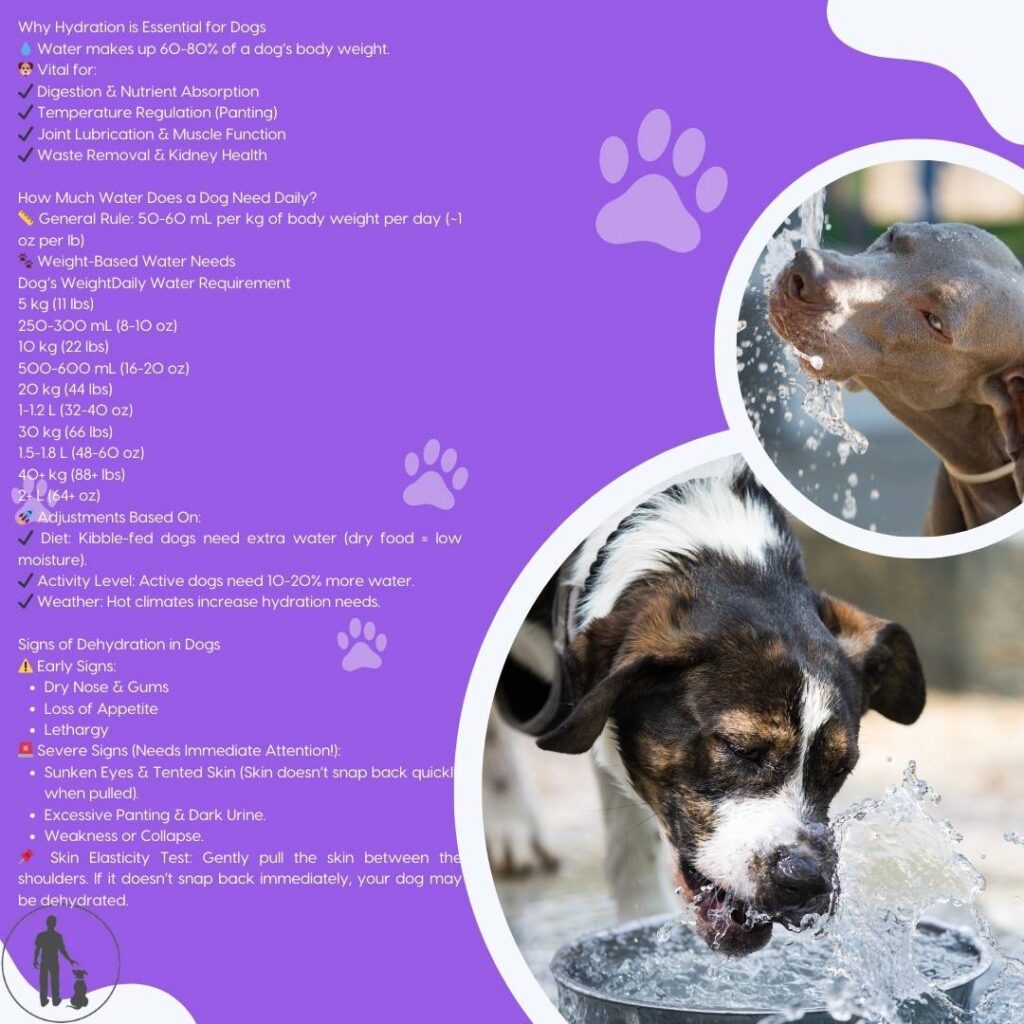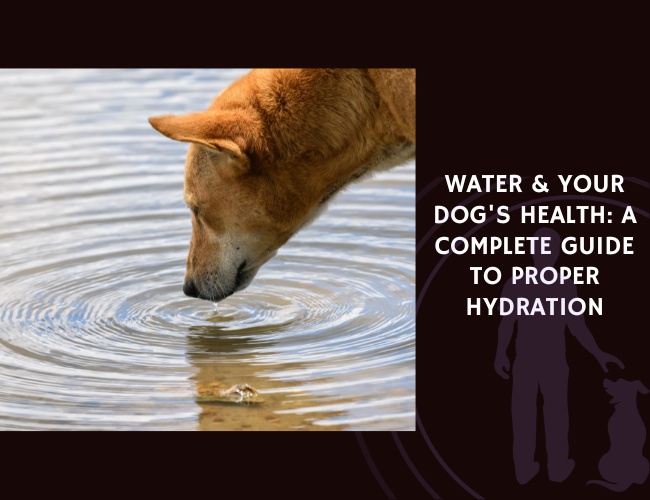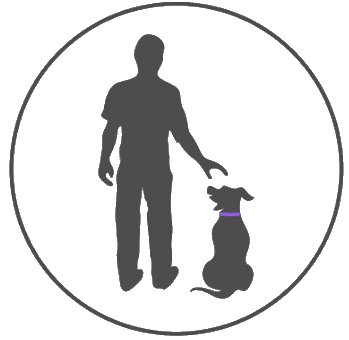Understanding the Importance of Water for Dogs
Water is not just a thirst-quencher for your dog—it’s an essential component of their overall health and well-being. Comprising 60-80% of a dog’s body weight, water plays an irreplaceable role in almost every physiological function. Whether helping with digestion or keeping your pup cool in the hot summer months, proper hydration is crucial.
Vital Functions of Water
Water supports several vital bodily functions in dogs that are essential for their survival and quality of life:
Digestion
One of the primary roles of water in a dog’s body is aiding in digestion. Adequate hydration helps to break down food efficiently, facilitating nutrient absorption. It also keeps the digestive tract smooth and functional, preventing issues like constipation and ensuring that the nutrients your dog consumes are properly absorbed.
Circulation
Water is a key element in blood composition, helping to transport essential nutrients and oxygen to the body’s cells. Proper hydration ensures that your dog’s circulatory system works efficiently, delivering these vital elements to tissues and organs promptly. This effective circulation also aids in the removal of waste products, keeping your dog’s system clean and running smoothly.
Temperature Regulation
Dogs rely heavily on water for temperature regulation. Unlike humans, dogs don’t sweat through their skin. Instead, they regulate their body temperature primarily through panting and a small amount via their paw pads. Adequate hydration supports this cooling process; water in the body absorbs excess heat and then evaporates through panting, helping to maintain a stable internal temperature.
Joint Lubrication
Just like humans, dogs experience wear and tear in their joints. Water is a critical component in keeping these joints lubricated, reducing friction, and ensuring smooth movement. Proper hydration helps maintain the viscosity of synovial fluid, the lubricant in joint cavities, thus preventing joint stiffness and arthritis.
Cognitive Function and Hydration
Water not only benefits physical health but also supports cognitive function in dogs. Proper hydration aids in maintaining electrolyte balance, which is crucial for nerve function and muscle performance. When a dog is well-hydrated, their brain can function more effectively, leading to better mental clarity, improved mood, and overall cognitive health.
A Pillar of Overall Well-being
Given its foundational role in these critical functions, water truly stands as a pillar of your dog’s well-being. An adequately hydrated dog is more likely to have healthy digestion, efficient circulation, stable temperature, flexible joints, and sharp mental faculties.
As we delve deeper into various aspects of canine hydration, it’s crucial to remember that water is a non-negotiable, life-sustaining nutrient for your dog. Ensuring they have constant access to fresh, clean water and understanding their unique hydration needs can significantly impact their overall health and happiness. Let’s explore more about how you can ensure your furry friend stays well-hydrated!
With a firm understanding of the pivotal role water plays in your dog’s health, the next topic will dive into the specific daily water requirements for dogs, ensuring you’re well-prepared to meet your dog’s unique hydration needs.
Daily Water Requirements for Dogs
Ensuring your furry friend stays properly hydrated is crucial for their overall health and well-being. Understanding the daily water requirements for dogs can help you keep them healthy and happy.
General Guideline for Water Intake
A simple rule of thumb is that dogs need about 50-60 mL of water per kg of body weight each day. This is approximately 1 oz of water per lb of body weight. Here’s a quick reference to help you figure out how much water your dog might need:
- Dogs weighing 5 kg (11 lbs) need about 250-300 mL (8-10 oz) of water each day.
- Dogs weighing 10 kg (22 lbs) need about 500-600 mL (16-20 oz).
- Dogs weighing 20 kg (44 lbs) need about 1-1.2 L (32-40 oz).
- Dogs weighing 30 kg (66 lbs) need about 1.5-1.8 L (48-60 oz).
- Dogs weighing 40+ kg (88+ lbs) need about 2+ L (64+ oz) of water each day.
These numbers provide a solid starting point, but remember, each dog is unique, and individual needs may vary.
Factors Affecting Water Needs
Several factors can influence the amount of water your dog needs each day:
Size and Breed
Larger breeds naturally require more water than smaller breeds due to their greater body mass. Additionally, breed-specific traits can influence hydration needs. For example, brachycephalic breeds (like Bulldogs and Pugs) can have trouble with heat regulation and may need more water in warm conditions.
Activity Level
Dogs that are very active, such as those that run, play, or work regularly, can need up to 20% more water. The increased activity means more water is necessary to replace what’s lost through panting and sweating, though dogs only sweat through their paw pads.
Diet Type
The type of food your dog eats also affects their daily water requirement. Dry kibble diets require your dog to drink more water, as dry food contains less moisture. On the other hand, wet or raw food diets provide additional moisture, contributing to overall hydration.
Climate
Climate plays a significant role in how much water your dog needs. In hot weather, dogs lose more water through panting and may need an increased intake of 20-30%. Conversely, in cooler climates, they may require slightly less but should always have access to fresh water.
Understanding your dog’s specific needs can help you ensure they are always appropriately hydrated. Now, having a clear idea of how much water your dog should generally drink and the factors influencing this can empower you to better care for your dog’s hydration needs.
By monitoring these elements and making necessary adjustments, you can help maintain your dog’s health and well-being efficiently.
Recognizing Dehydration Symptoms
Dehydration is a serious condition for dogs and can lead to severe health issues if not addressed promptly. As a responsible pet owner, it’s crucial to recognize the signs of dehydration and understand how to respond effectively. This chapter will guide you through the early symptoms, how to perform a skin elasticity test, and when to seek immediate veterinary care.
Early Warning Signs
Early detection of dehydration can make a big difference in your dog’s health. Look out for these initial signs that your dog might be dehydrated:
- Dry Nose and Gums – If your dog’s nose and gums are dry rather than moist, this could be an early indication of dehydration.
- Loss of Appetite – A dog that has little interest in food might be suffering from dehydration.
- Lethargy and Lower Energy Levels – If your usually active dog suddenly becomes lethargic or more tired than normal, dehydration could be the culprit.
Recognizing these early symptoms allows you to take swift action to rehydrate your dog and prevent more severe consequences.
Skin Elasticity Test
A practical and simple method to check for dehydration is the skin elasticity test. Follow these steps to perform the test:
- Gently Pull Up the Skin – Gently pull up the skin between your dog’s shoulder blades.
- Observe the Skin – Once you release the skin, observe how quickly it returns to its normal position.
If the skin snaps back quickly, your dog’s hydration levels are likely normal. However, if the skin stays tented or is slow to return, this is a crucial indicator that your dog may be dehydrated. This test is particularly helpful as it provides an immediate visual cue of your dog’s hydration status.
Severe Symptoms Requiring Immediate Attention
Sometimes, dehydration can become severe and poses a significant health risk. Recognize the following severe symptoms and seek immediate veterinary attention if any are present:
- Sunken Eyes – Dogs showing dehydration may have eyes that appear sunken into their skull.
- Excessive Panting – While panting is a natural cooling mechanism, excessive panting, especially in cooler conditions, can signal a problem.
- Skin Remains Tented – As mentioned in the skin elasticity test, if the skin remains tented and doesn’t snap back, it’s a sign of severe dehydration.
Prompt veterinary care is essential when these severe symptoms arise to prevent potential organ failure or other life-threatening complications.
Understanding how to recognize and respond to dehydration is a fundamental aspect of responsible dog ownership. By staying vigilant and responsive, you can ensure your dog’s health and well-being remain at their best.
Risks of Improper Hydration
Chronic Dehydration
Just like in humans, chronic dehydration in dogs can result in a slew of health complications. When a dog’s body persistently lacks adequate water, its kidney function can suffer. The kidneys rely heavily on water to flush out toxins and waste from the body. Without sufficient hydration, the risk of creating kidney stones or crystals increases significantly, leading to kidney disease or urinary tract infections.
Digestive health also hinges on adequate hydration. Water aids in the digestion process, helping to break down food and transport nutrients throughout the body. Without enough water, dogs may experience slower digestion and increased constipation, making regular hydration a non-negotiable for preventing digestive discomfort and maintaining a smooth digestive process.
Overhydration Risks
While ensuring a dog has plenty of water is crucial, it’s also possible to overdo it. Overhydration can lead to a condition known as water intoxication or hyponatremia. This occurs when there’s an excessive amount of water relative to sodium in the dog’s bloodstream. Symptoms of water intoxication include lethargy, nausea, a bloated stomach, excessive drooling, and loss of coordination. In severe cases, it can cause brain swelling and seizures.
Activities like excessive swimming, vigorous water play, or force-feeding water after dehydration can lead to overhydration. Additionally, dogs with certain medical conditions, such as kidney issues or hormonal disorders, are at a higher risk of developing this condition and need careful monitoring.
Impact on Temperature Regulation
Dogs regulate their body temperature primarily through panting, which helps cool them down by evaporating water from their respiratory system. Proper hydration ensures that dogs maintain an efficient cooling system, particularly important during hot weather or intense physical activity. Without enough water, dogs can’t pant effectively, making them prone to overheating and heatstroke, a potentially deadly condition.
Conclusion
The significant risks associated with improper hydration underscore the importance of monitoring a dog’s water intake vigilantly. While chronic dehydration can lead to severe health complications such as kidney disease and digestive issues, overhydration is equally dangerous, posing risks of water intoxication. Always ensuring your dog has access to fresh, clean water, especially in hot weather or during heavy exercise, is crucial for preventing these risks and maintaining optimal health.

Effective Hydration Strategies
Ensuring that your dog stays hydrated is paramount for their overall health and well-being. By implementing effective hydration strategies, you can help prevent the risks associated with improper hydration. Here are some practical tips to keep your dog adequately hydrated throughout their daily activities.
Providing Fresh Water Around the House
One of the simplest yet most effective strategies for keeping your dog hydrated is to ensure that fresh water is always accessible.
- Place water bowls in multiple locations around your home to encourage frequent drinking. This is especially helpful for puppies and senior dogs who might not move around much.
- Change the water at least twice daily to ensure it remains clean and appealing.
- Consider using water fountains. Many dogs prefer running water, and it can entice them to drink more.
Incorporating Moisture-Rich Foods
Your dog’s diet plays a crucial role in their overall hydration. Incorporating moisture-rich foods can significantly boost their daily water intake.
- Wet or raw food diets are naturally higher in moisture content compared to dry kibble. Choose these options to naturally enhance your dog’s hydration levels.
- Hydrating treats, such as ice cubes, watermelon, and bone broth, can be both a tasty and useful addition to their diet.
Special Considerations for Exercise and Hot Weather
Dogs are prone to losing more water during exercise and in hot weather conditions. Here are some additional strategies to keep your dog hydrated under these circumstances:
- Exercise:
- Bring portable water bowls on long walks or hikes.
- Offer small amounts of water periodically instead of large gulps, which can help prevent overhydration and related issues.
- Hot Weather:
- Increase your dog’s water intake by 20-30% during hot weather or heatwaves.
- Provide shaded areas and cooling mats to help regulate their body temperature.
- Always monitor your dog’s behavior. Excessive panting, lethargy, or disorientation can be signs that they need to cool down and hydrate immediately.
These effective hydration strategies can help ensure that your dog remains well-hydrated and healthy. Taking these steps not only supports their vital bodily functions but also enhances their overall quality of life. Keep an eye on their hydration needs and adapt these strategies as necessary to maintain their well-being.
Special Considerations for Different Dogs
When it comes to keeping your furry friend properly hydrated, one size does not fit all. Different breeds and ages have unique hydration needs, and certain physiological and environmental factors also come into play. Understanding these needs will help you ensure that your dog remains happy and healthy.
Breed-Specific Hydration Needs
Each breed has its own set of characteristics that affect hydration needs. Here are a few key points to consider:
- Brachycephalic Breeds: Bulldogs, Pugs, and other breeds with shorter snouts are more susceptible to heat stress and often struggle with effective heat dissipation. This makes them more prone to dehydration. Ensuring they have constant access to fresh, cool water, especially during hot weather, is crucial.
- Active Breeds: Dogs like Border Collies and Huskies that are naturally energetic and spend a lot of time being physically active have higher water needs. The increased energy expenditure means they lose more water and need more frequent hydration to stay in top condition.
- Large Breeds: Dogs such as Great Danes and Mastiffs have larger bodies and thus higher overall water requirements. Providing them with sufficient water is essential to maintain their larger body mass and support all physiological functions effectively.
Age-Related Hydration Requirements
Hydration needs also vary across different stages of a dog’s life:
- Puppies: Young dogs are generally more active and have faster metabolisms, requiring more frequent hydration. Their smaller size and rapid growth mean they need proportionally more water to support development.
- Senior Dogs: As dogs age, their kidney function may decline, making them more susceptible to dehydration. Additionally, older dogs may suffer from conditions that make them less eager to drink. It is important to monitor their water intake closely and provide easy access to multiple water sources throughout the home.
Adjustments for Active and Working Dogs
Dogs that are highly active or work in specific roles need special attention to their hydration needs:
- During Exercise: For dogs engaging in rigorous physical activities like running, hiking, or playing sports, it is wise to bring portable water bowls on outings. Offer small amounts of water frequently to prevent dehydration.
- Hot Weather: Dogs are at a higher risk of dehydration during heatwaves. Providing shaded areas and cooling mats can help, and it is recommended to increase water intake by 20-30% during extreme heat conditions.
Tailoring your approach to hydration based on your dog’s breed, age, and activity level ensures that they receive the best care possible. By being aware of these factors, you can make well-informed decisions about your dog’s water intake, improving their overall health and well-being.
Modern Solutions for Hydration Monitoring
Hydration is a key element of your dog’s overall health journey. With advancements in technology, monitoring and ensuring your dog’s hydration has become more innovative and convenient. This chapter delves into modern solutions designed to help you keep track of your dog’s water intake more effectively, ensuring they remain healthy and well-hydrated.
Smart Water Bowls and AI Monitoring Technologies
One of the remarkable innovations in pet care is the advent of smart water bowls. These bowls, integrated with sensors, can track your dog’s daily water intake, providing valuable data to ensure your pet is drinking enough. Some models even connect to your smartphone, sending alerts if your dog hasn’t consumed enough water or if the water needs to be refilled.
AI monitoring technologies take this a step further by using wearable devices like smart collars that monitor for signs of dehydration. These collars can detect changes in behavior, temperature, and other factors that could indicate hydration issues. With these tools, you can stay ahead of potential problems and address them swiftly, ensuring your pet remains healthy and hydrated.
Innovative Hydration Supplements and Products
In addition to smart technology, there are various hydration supplements and products designed to make maintaining proper hydration levels easier. Electrolyte supplements, for example, are becoming increasingly popular for dogs. These supplements are especially beneficial for working and senior dogs, as they help maintain electrolyte balance and prevent dehydration, particularly during high activity or hot weather conditions.
Hydration Boosters:
- Electrolyte tablets or powders can be added to your dog’s water.
- Hydrating gels and treats are an easy and tasty way to increase water intake.
Tools for Tracking Daily Water Intake
Tracking your dog’s daily water intake can help you understand their hydration needs better. Here are some modern tools and methods:
- Hydration Apps: These apps allow you to log your dog’s daily water intake manually or automatically via sync with smart bowls and collars.
- Water Bottles with Measurements: Some portable water bottles come with measurement marks to help you track how much your dog is drinking, ideal for on-the-go hydration during walks or trips.
- Automatic Water Dispensers: These devices ensure your dog has a steady supply of fresh water, refilling automatically as your dog drinks.
These modern tools not only make it easier to monitor your dog’s hydration but also offer peace of mind that your furry friend is getting the water they need to thrive each day.
Understanding and using these advanced solutions can help you stay on top of your dog’s hydration needs. Remember, prevention is better than cure, and with these tools, you can ensure your dog’s health and well-being are always a top priority.
Next, we’ll discuss more about how to cater to specific hydration needs based on your dog’s breed, age, and activity level.Catering to Specific Hydration Needs Based on Your Dog’s Breed, Age, and Activity Level
Hydration needs in dogs can vary widely depending on several factors, including breed, age, and activity level. Understanding these differences is crucial for tailoring hydration strategies that fit your pet’s unique requirements.

Breed-Specific Hydration Considerations
Some breeds are more prone to dehydration than others. Large breeds and those with thick coats may need more water, especially in hot weather, to help regulate their body temperature. Brachycephalic breeds (dogs with short noses like Bulldogs, Pugs, and Boxers) can have more difficulty breathing, especially in heat, which can lead to increased loss of moisture through panting and subsequently higher water needs. Consulting with a veterinarian can provide insights into breed-specific hydration needs and recommendations.
Age-Related Hydration Needs
Puppies, being very active, might require more water throughout the day to support their energy levels and developing bodies. On the other hand, senior dogs may experience changes in metabolism and health status (e.g., kidney function) affecting their hydration needs.
As you’ve journeyed through the significant roles water plays in your dog’s life, from aiding digestion to keeping their joints flexible and their minds sharp, it’s clear that hydration is more than just a simple need—it’s a cornerstone of their health. Now, imagine the difference you can make with a little extra effort and mindfulness. Ensure your furry friend has access to clean, fresh water at all times and encourage hydration through wet dog food or water-rich treats.
Take a moment to check your dog’s water bowl right now. Is it full? Is the water clean? Your swift actions could be the key to your dog’s happiness and well-being! Let’s make every day a hydrated day for your beloved pet.









